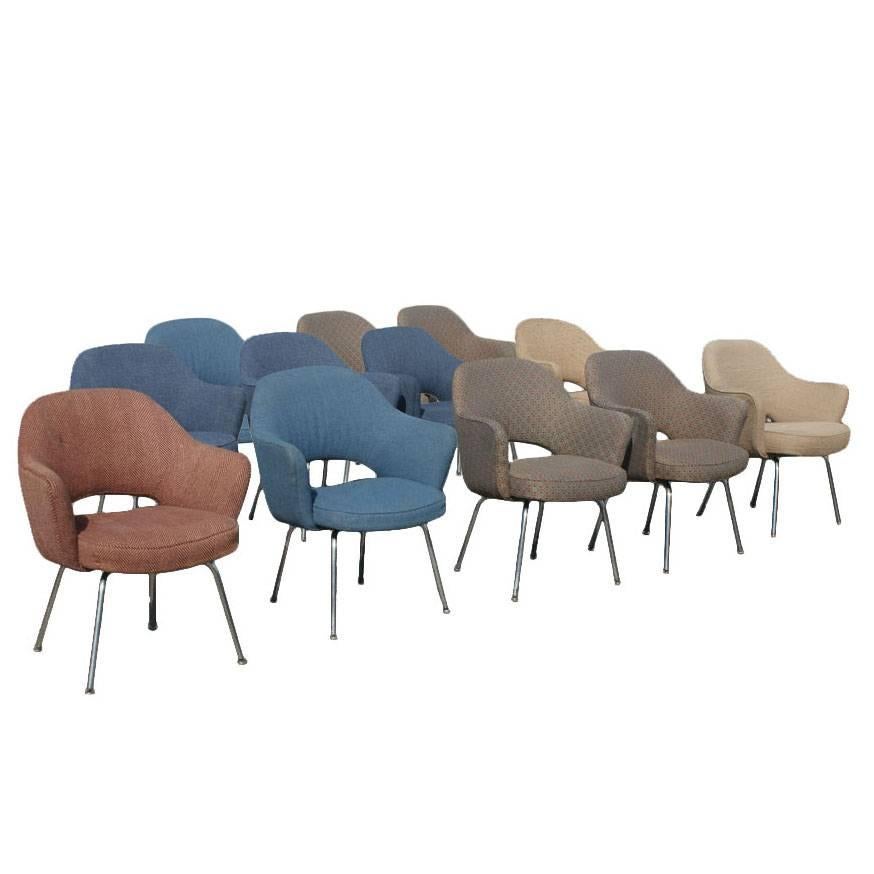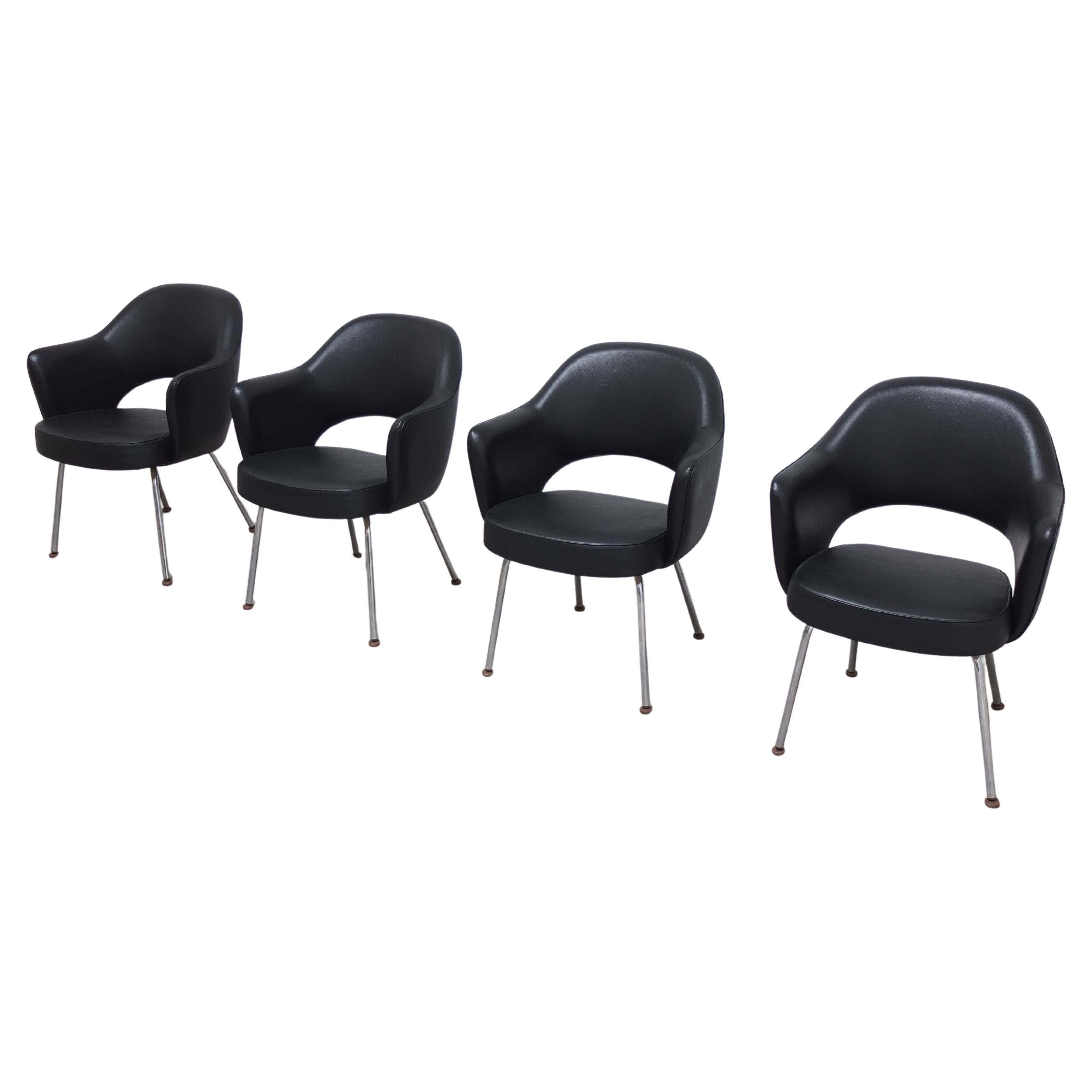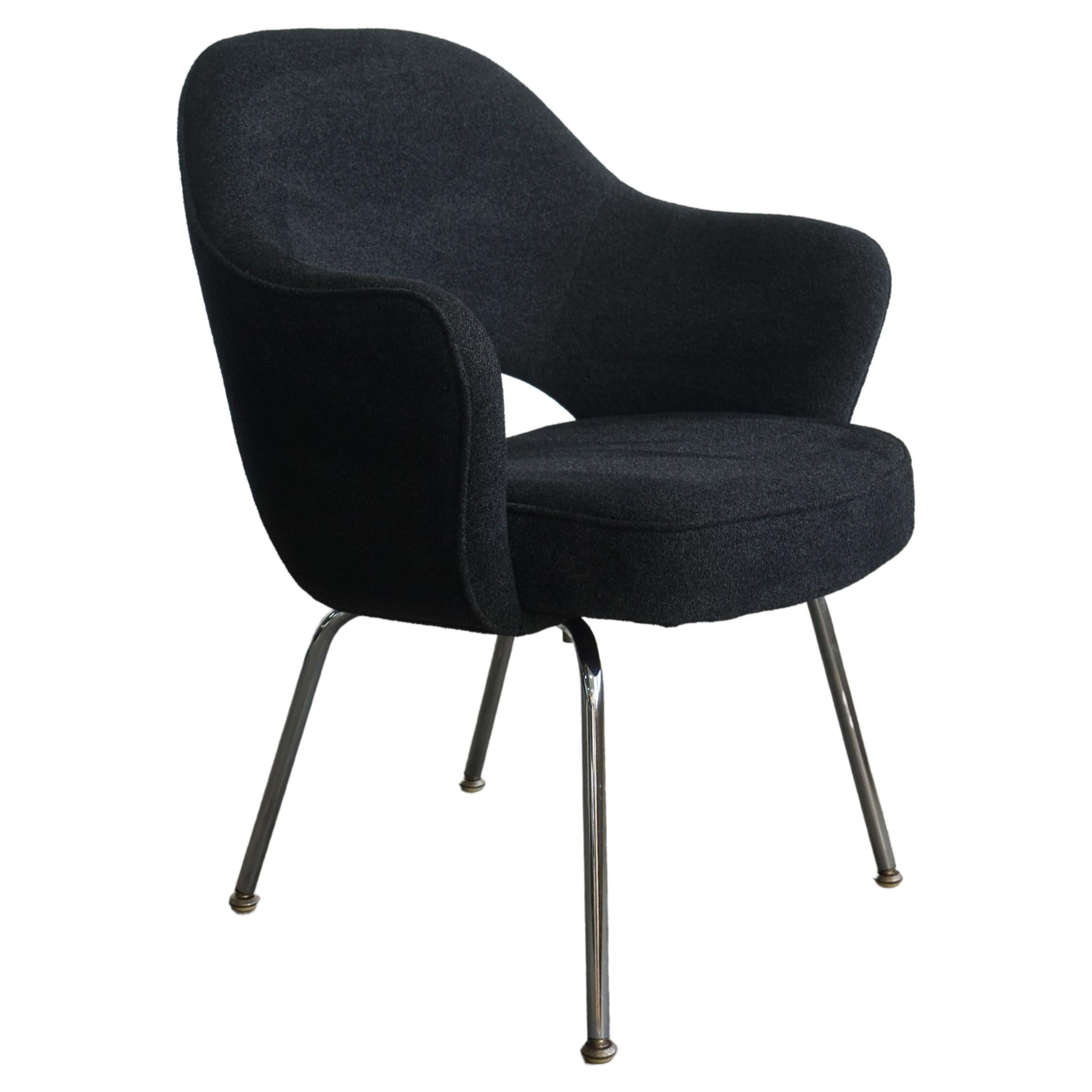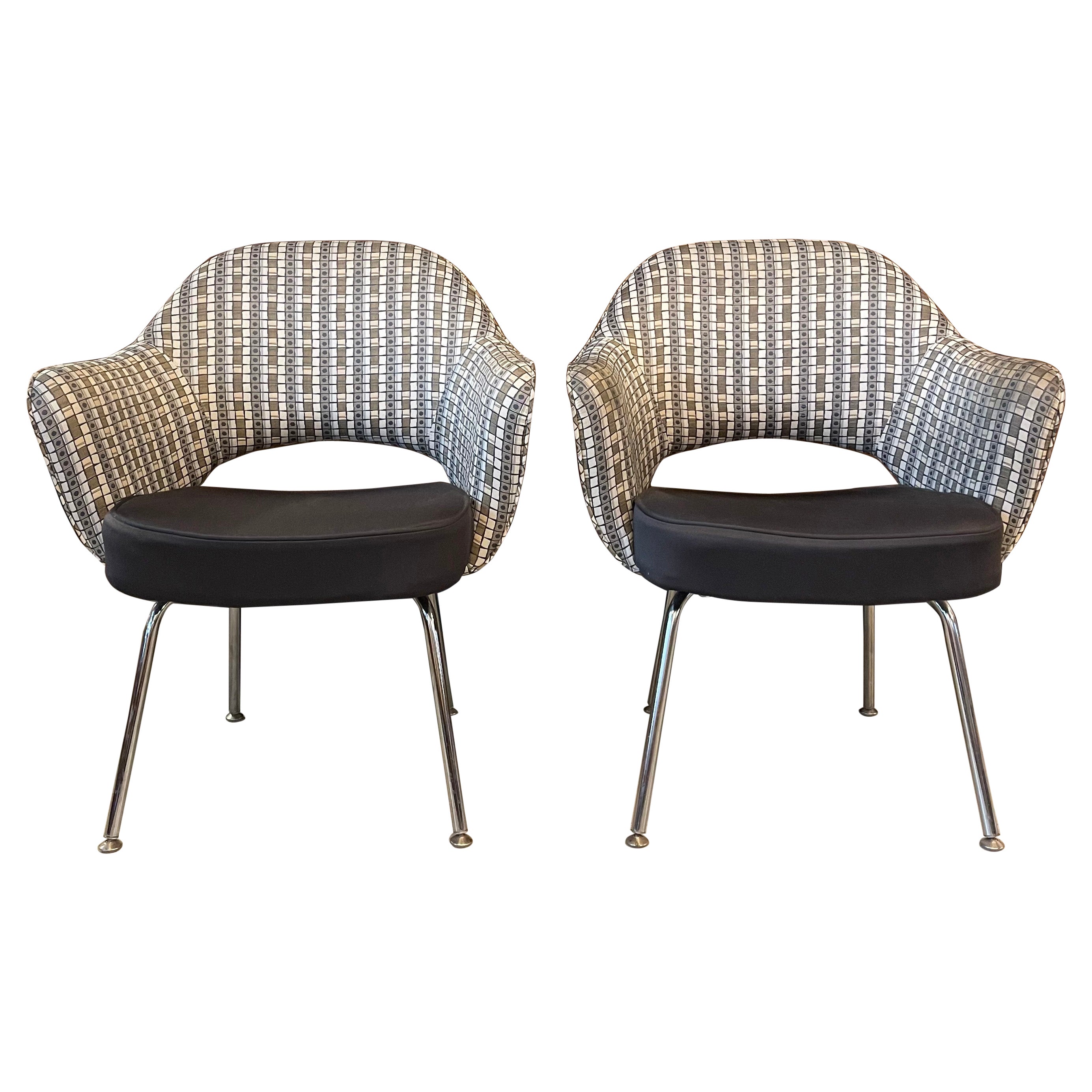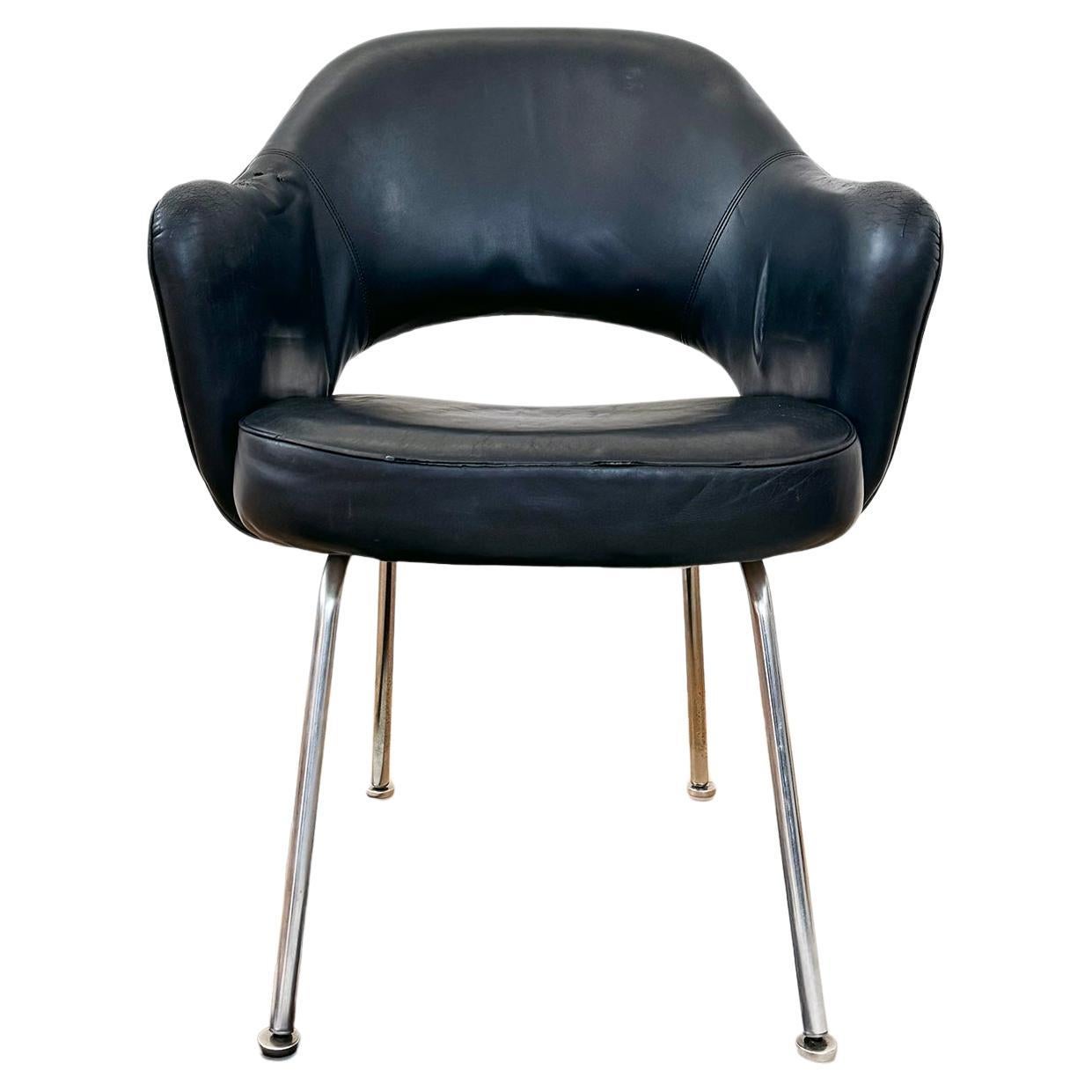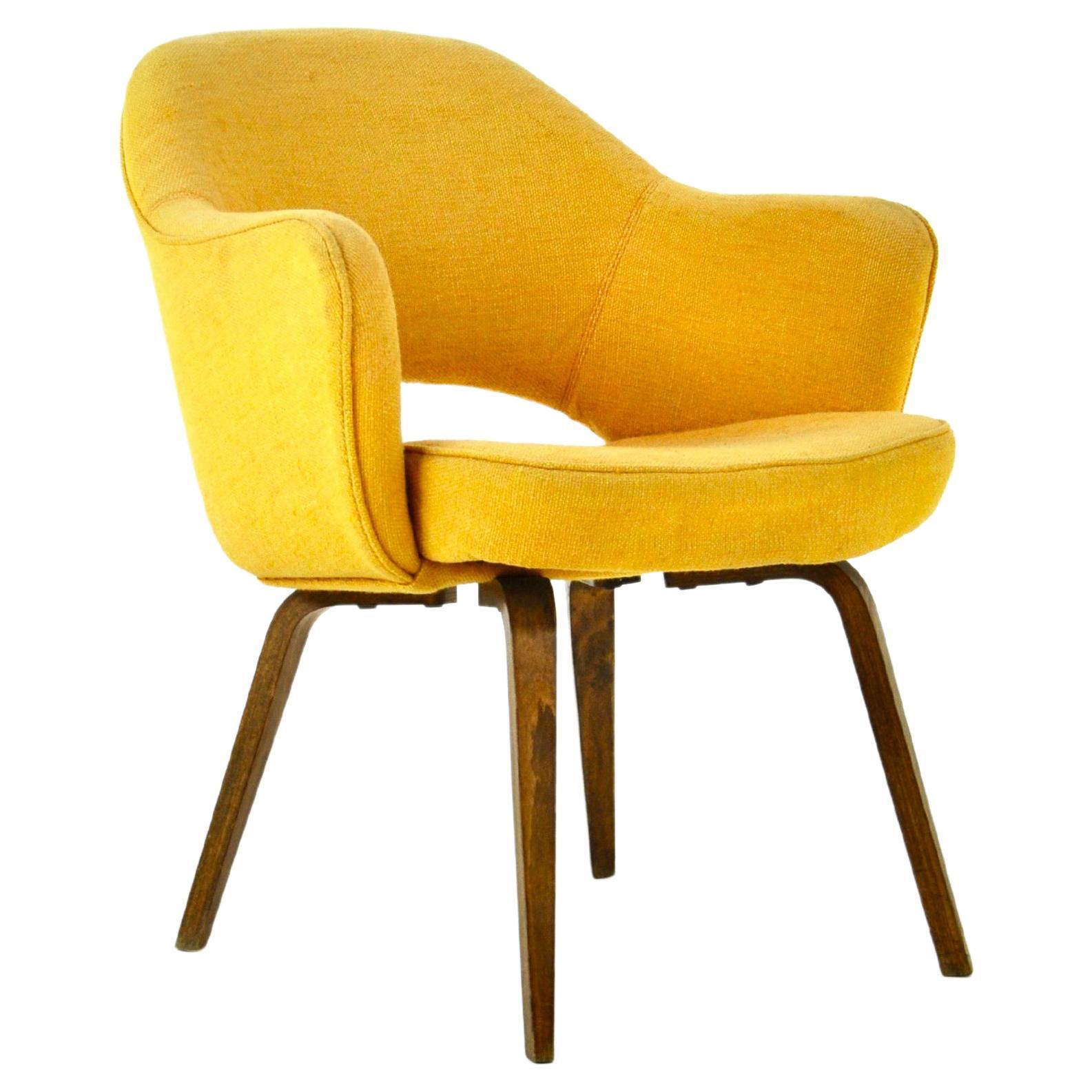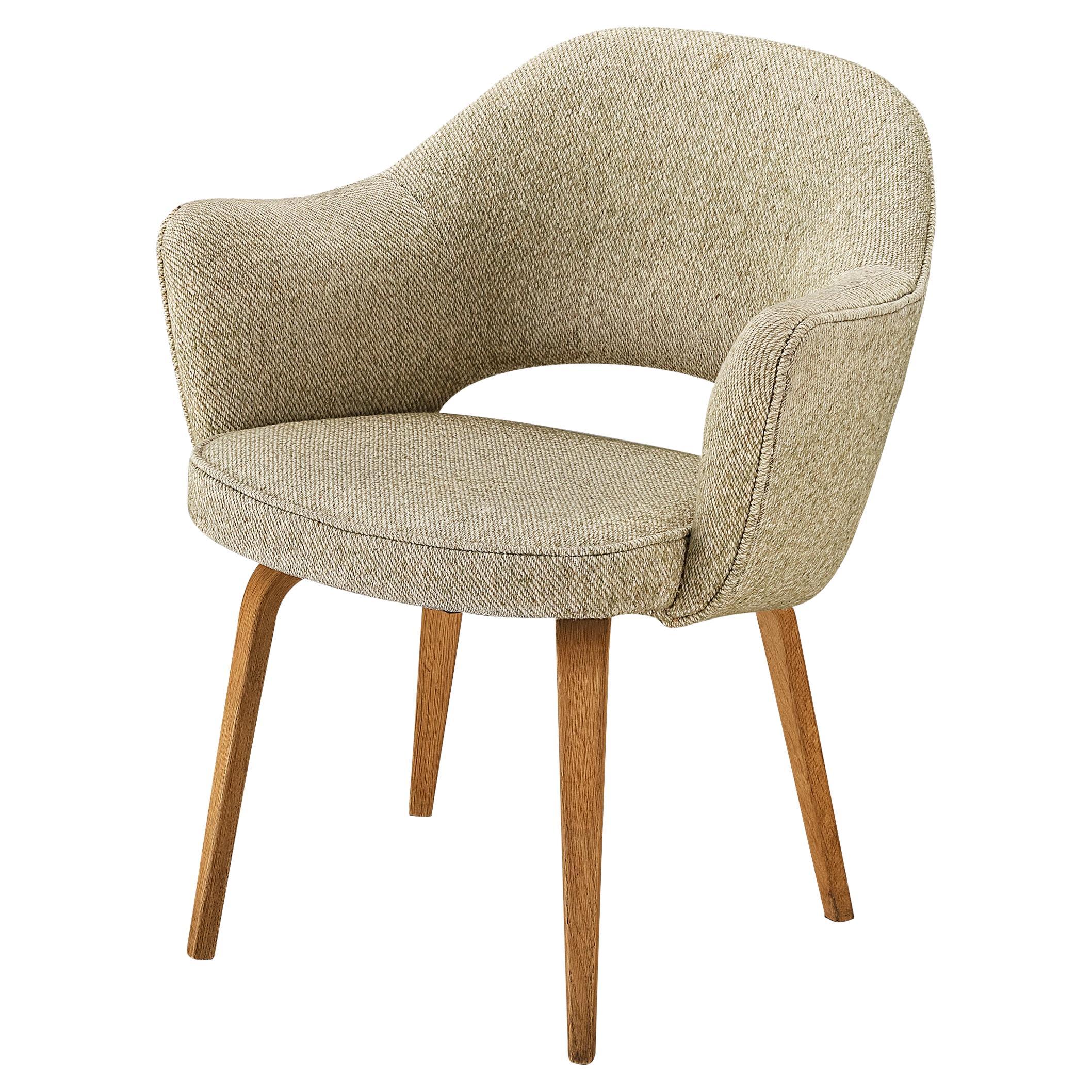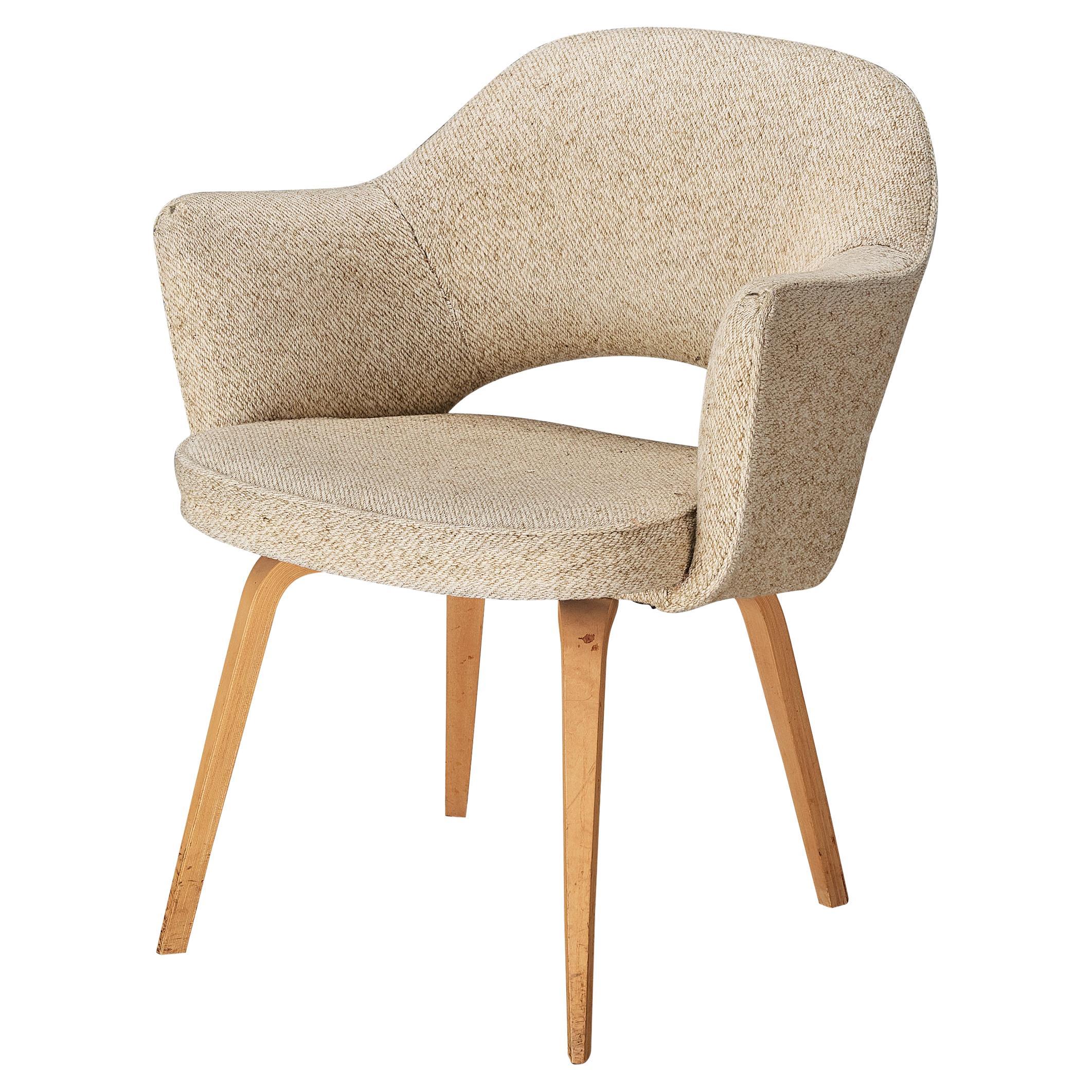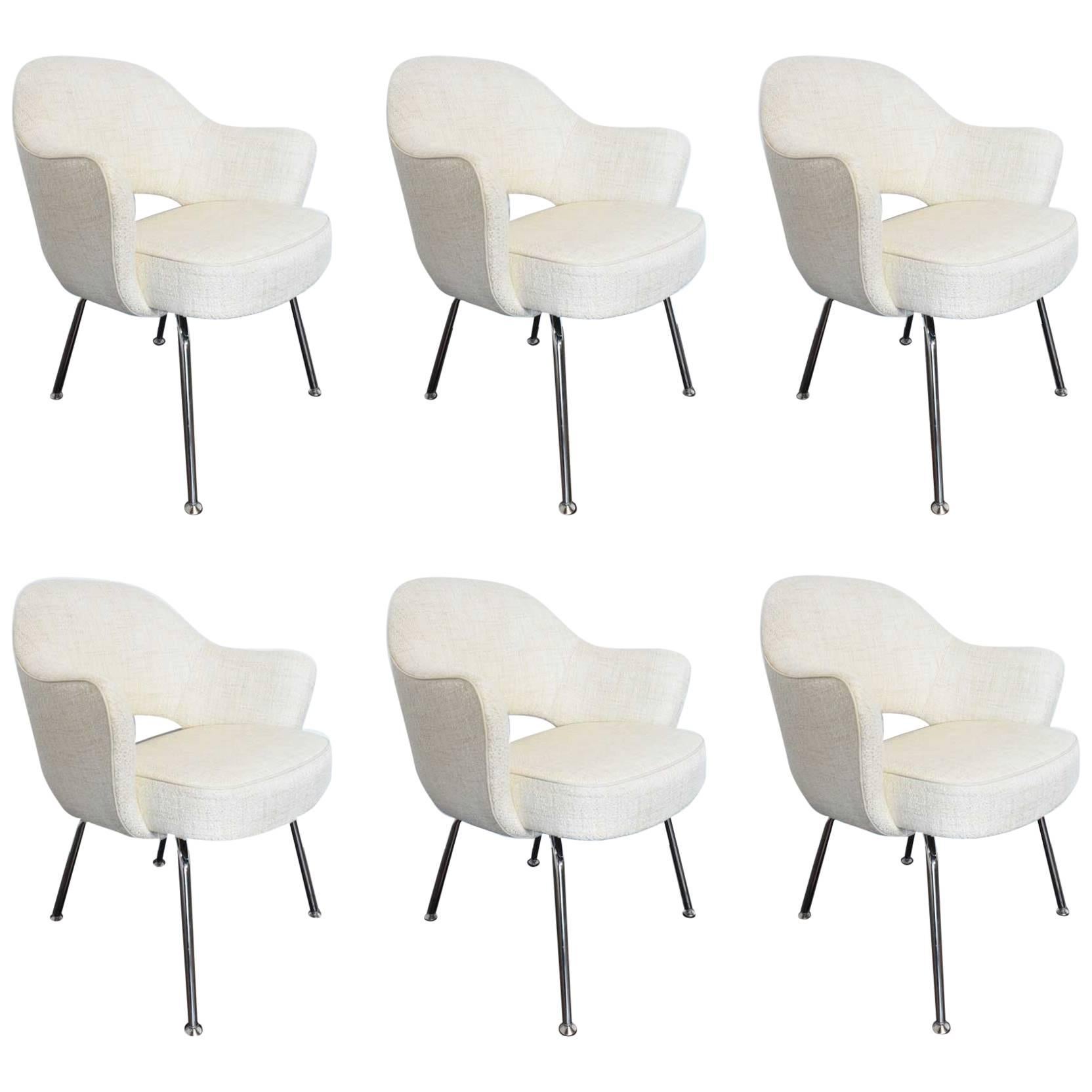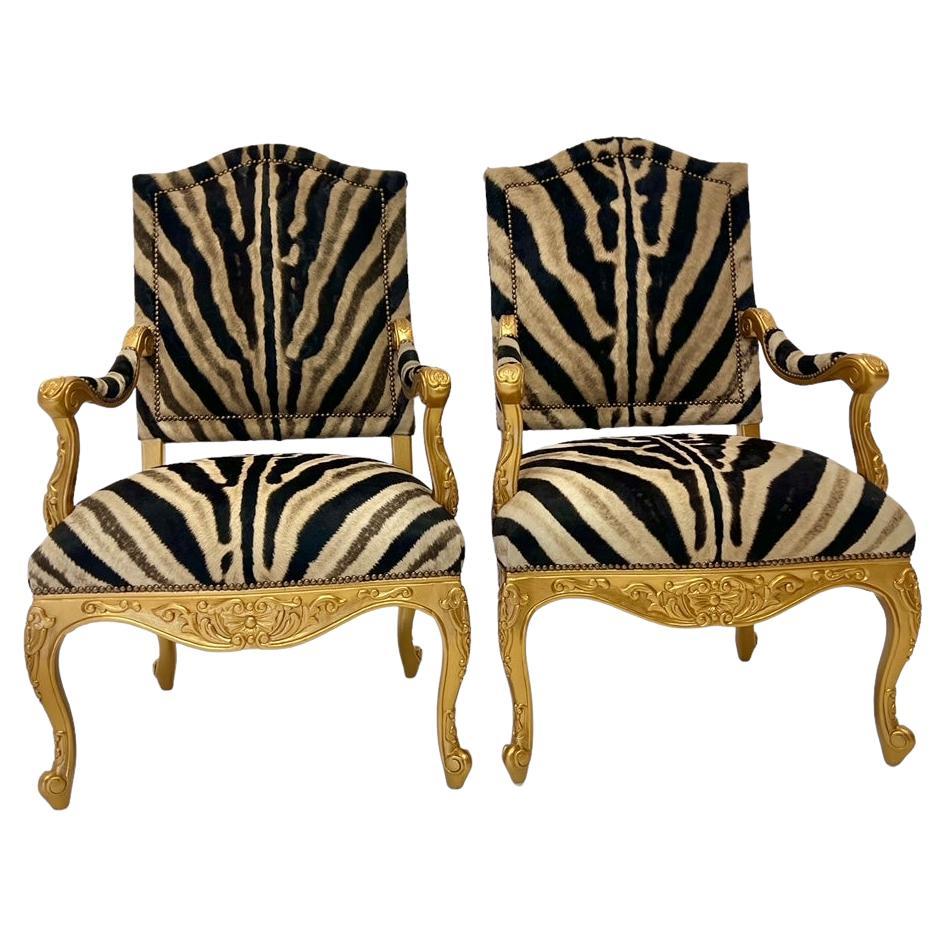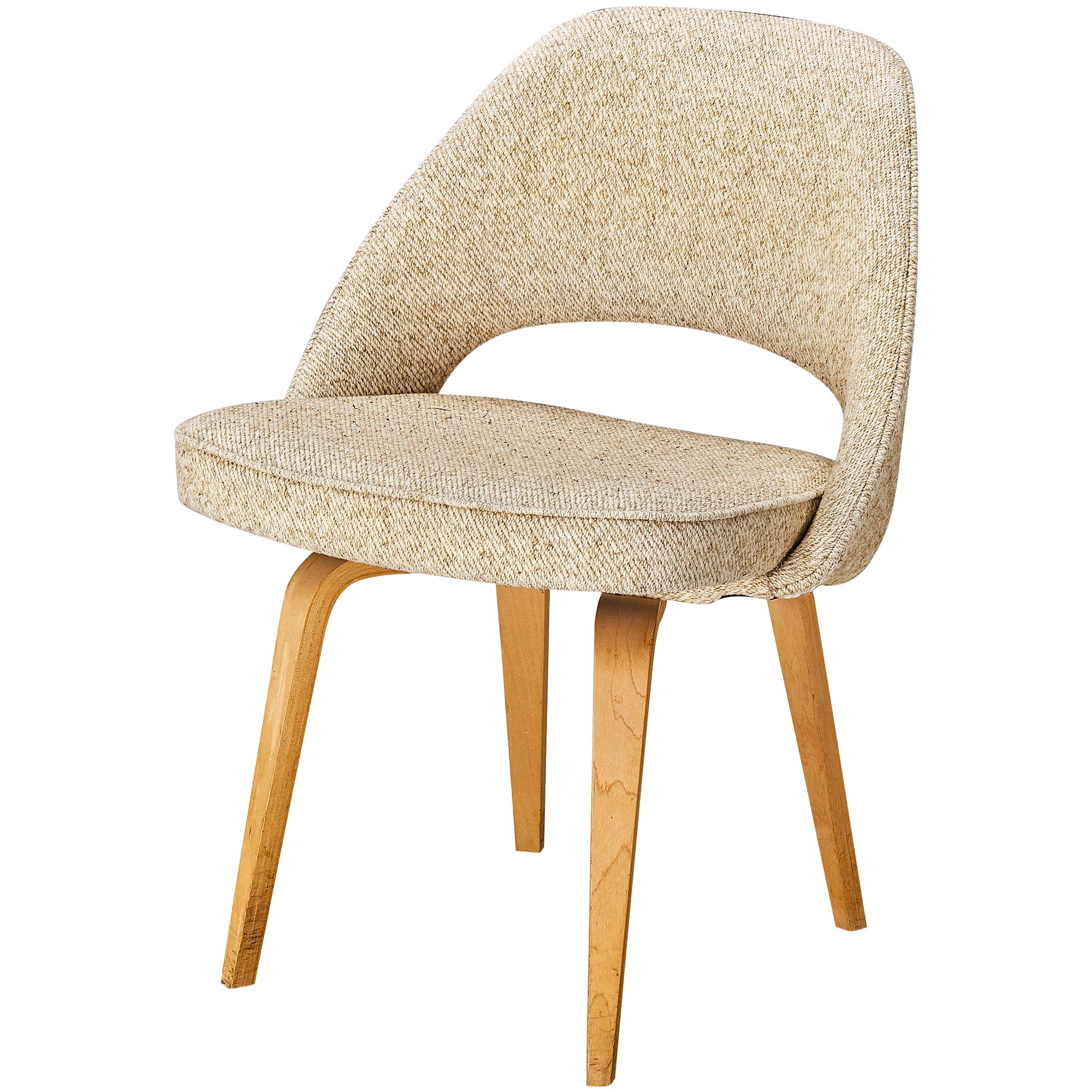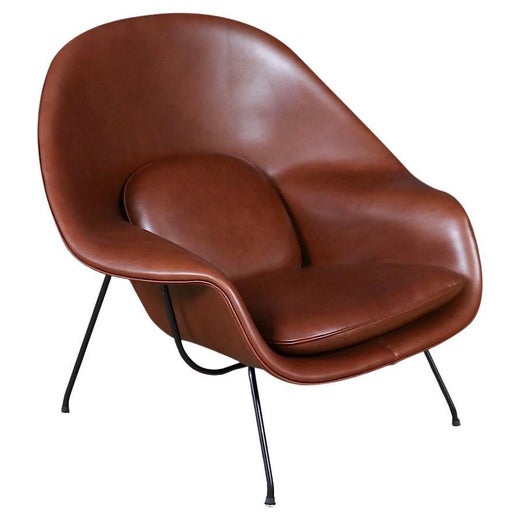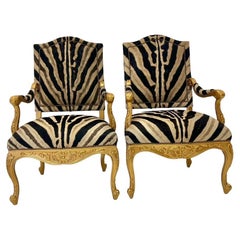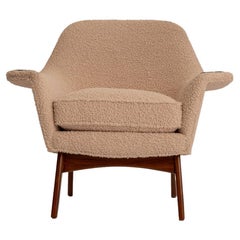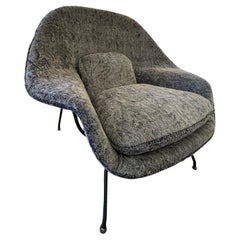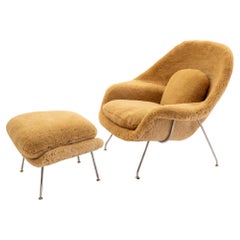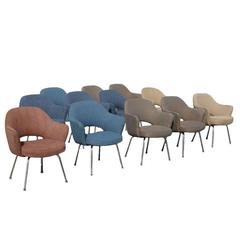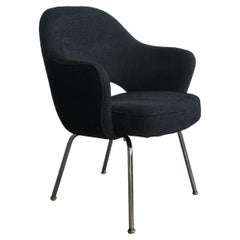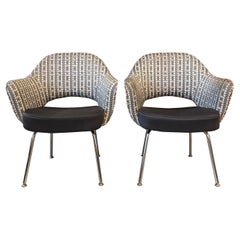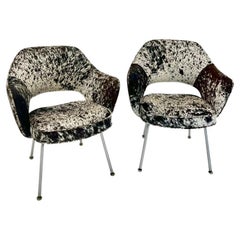
Eero Sarineen Original Executive Armchairs in South African Cow Hide
View Similar Items
Eero Sarineen Original Executive Armchairs in South African Cow Hide
About the Item
- Creator:Eero Saarinen (Designer),Florence Knoll (Manufacturer)
- Design:Executive Arm ChairExecutive Series
- Dimensions:Height: 31.5 in (80.01 cm)Width: 25 in (63.5 cm)Depth: 23.5 in (59.69 cm)Seat Height: 3 in (7.62 cm)
- Sold As:Set of 2
- Style:Mid-Century Modern (In the Style Of)
- Materials and Techniques:
- Place of Origin:
- Period:
- Date of Manufacture:circa 1950
- Condition:Reupholstered. The upholstery is brand new.
- Seller Location:Saint Louis, US
- Reference Number:1stDibs: LU7368231528122
Eero Saarinen
Through his work as an architect and designer, Eero Saarinen was a prime mover in the introduction of modernism into the American mainstream. Particularly affecting were the organic, curvilinear forms seen in Saarinen’s furniture and his best-known structures: the gull-winged TWA Flight Center at John F. Kennedy airport in New York (opened 1962), Dulles International Airport in Virginia (1962) and the Gateway Arch in St. Louis, Missouri (1965).
Saarinen had a peerless modernist pedigree. His father, Eliel Saarinen, was an eminent Finnish architect who in 1932 became the first head of the Cranbrook Academy of Art in suburban Detroit. The school became synonymous with progressive design and decorative arts in the United States, and while studying there the younger Saarinen met and befriended several luminaries of mid-century modernism, among them Harry Bertoia and Charles and Ray Eames.
At Cranbrook, Saarinen also met Florence Schust Knoll, who, as director of her husband Hans Knoll's eponymous furniture company, would put Saarinen’s best designs into production. These include the Grasshopper chair, designed in 1946 and so named because its angled bentwood frame resembles the insect; the Tulip chair (1957), a flower-shaped fiberglass shell mounted on a cast-aluminum pedestal; and the lushly contoured Womb lounge chair and ottoman (1948). In his furniture as in his architecture, the keynotes of Eero Saarinen’s designs are simplicity, strength and grace.
Find vintage Eero Saarinen tables, chairs and other furniture on 1stDibs.
Florence Knoll
Architect, furniture designer, interior designer, entrepreneur — Florence Knoll had a subtle but profound influence on the course of mid-century American modernism. Dedicated to functionality and organization, and never flamboyant, Knoll shaped the ethos of the postwar business world with her skillfully realized office plans and polished, efficient designs for sofas, credenzas, desks and other furnishings.
Knoll had perhaps the most thorough design education of any of her peers. Florence Schust was orphaned at age 12, and her guardian sent her to Kingswood, a girl’s boarding school that is part of the Cranbrook Educational Community in suburban Detroit. Her interest in design brought her to the attention of Eliel Saarinen, the Finnish architect and head of the Cranbrook Academy of Art.
Saarinen and his wife took the talented child under their wing, and she became close to their son, the future architect Eero Saarinen. While a student at the academy, Florence befriended artist-designer Harry Bertoia and Charles and Ray Eames. Later, she studied under three of the Bauhaus masters who emigrated to the United States. She worked as an apprentice in the Boston architectural offices of Walter Gropius and Marcel Breuer; Ludwig Mies van der Rohe taught her at the Illinois Institute of Technology.
In 1941, she met Hans Knoll, whose eponymous furniture company was just getting off the ground. They married in 1946, and her design sense and his business skills soon made Knoll Inc. a leading firm in its field. Florence signed up the younger Saarinen as a designer, and would develop pieces by Bertoia, Mies and the artist Isamu Noguchi.
Florence Knoll's main work came as head of the Knoll Planning Group, designing custom office interiors for clients such as IBM and CBS. The furniture she created for these spaces reflects her Bauhaus training: the pieces are pure functional design, exactingly built; their only ornament from the materials, such as wood and marble. Her innovations — the oval conference table, for example, conceived as a way to ensure clear sightlines among all seated at a meeting — were always in the service of practicality.
Since her retirement in 1965, Knoll received the National Medal of Arts, among other awards; in 2004 the Philadelphia Museum of Art mounted the exhibition “Florence Knoll: Defining Modern” — well deserved accolades for a strong, successful design and business pioneer. As demonstrated on these pages, the simplicity of Knoll’s furniture is her work’s great virtue: they fit into any interior design scheme.
Find vintage Florence Knoll sofas, benches, armchairs and other furniture on 1stDibs.
More From This Seller
View AllAntique Late 19th Century French French Provincial Armchairs
Zebra Hide, Wood
Mid-20th Century American Mid-Century Modern Armchairs
Wood, Bouclé
Vintage 1970s American Mid-Century Modern Lounge Chairs
Bouclé
Vintage 1960s American Mid-Century Modern Lounge Chairs
Steel
Vintage 1960s American Mid-Century Modern Lounge Chairs
Steel
2010s American Modern North and South American Rugs
Leather, Zebra Hide, Canvas
You May Also Like
Vintage 1950s Mid-Century Modern Armchairs
Mid-20th Century American Mid-Century Modern Armchairs
Metal
Vintage 1980s Mid-Century Modern Armchairs
Chrome
Mid-20th Century American Mid-Century Modern Armchairs
Chrome
Mid-20th Century American Mid-Century Modern Chairs
Metal
Vintage 1960s Belgian Mid-Century Modern Armchairs
Fabric, Wood
